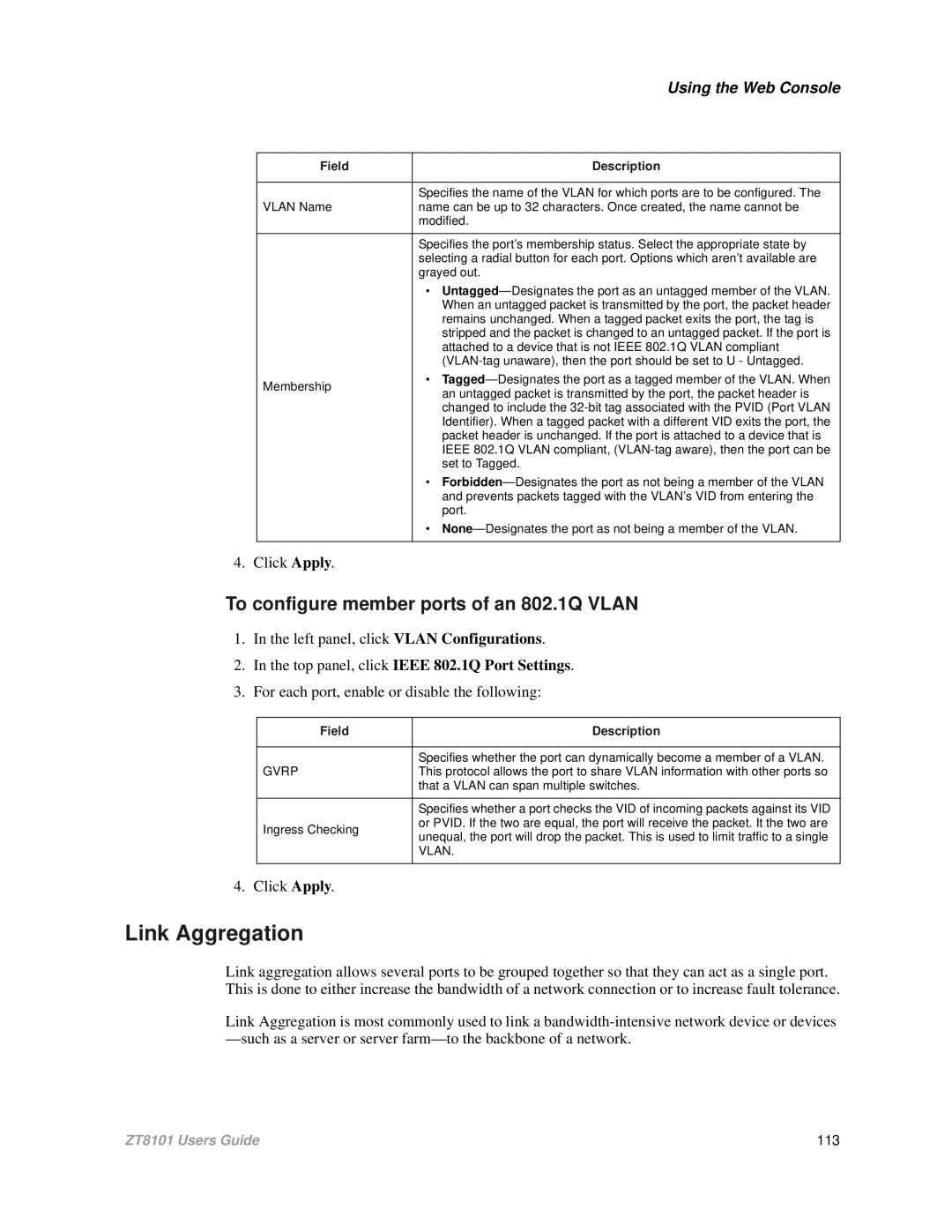| Using the Web Console | |
|
| |
Field | Description | |
|
| |
| Specifies the name of the VLAN for which ports are to be configured. The | |
VLAN Name | name can be up to 32 characters. Once created, the name cannot be | |
| modified. | |
|
| |
| Specifies the port’s membership status. Select the appropriate state by | |
| selecting a radial button for each port. Options which aren’t available are | |
| grayed out. | |
| • Untagged— Designates the port as an untagged member of the VLAN. | |
| When an untagged packet is transmitted by the port, the packet header | |
| remains unchanged. When a tagged packet exits the port, the tag is | |
| stripped and the packet is changed to an untagged packet. If the port is | |
| attached to a device that is not IEEE 802.1Q VLAN compliant | |
| ||
Membership | • Tagged— Designates the port as a tagged member of the VLAN. When | |
an untagged packet is transmitted by the port, the packet header is | ||
| ||
| changed to include the | |
| Identifier). When a tagged packet with a different VID exits the port, the | |
| packet header is unchanged. If the port is attached to a device that is | |
| IEEE 802.1Q VLAN compliant, | |
| set to Tagged. | |
| • Forbidden— Designates the port as not being a member of the VLAN | |
| and prevents packets tagged with the VLAN’s VID from entering the | |
| port. | |
| • None— Designates the port as not being a member of the VLAN. | |
|
|
4. Click Apply.
To configure member ports of an 802.1Q VLAN
1.In the left panel, click VLAN Configurations.
2.In the top panel, click IEEE 802.1Q Port Settings.
3.For each port, enable or disable the following:
Field | Description | |
|
| |
| Specifies whether the port can dynamically become a member of a VLAN. | |
GVRP | This protocol allows the port to share VLAN information with other ports so | |
| that a VLAN can span multiple switches. | |
|
| |
| Specifies whether a port checks the VID of incoming packets against its VID | |
Ingress Checking | or PVID. If the two are equal, the port will receive the packet. It the two are | |
unequal, the port will drop the packet. This is used to limit traffic to a single | ||
| ||
| VLAN. | |
|
|
4. Click Apply.
Link Aggregation
Link aggregation allows several ports to be grouped together so that they can act as a single port. This is done to either increase the bandwidth of a network connection or to increase fault tolerance.
Link Aggregation is most commonly used to link a
ZT8101 Users Guide | 113 |
